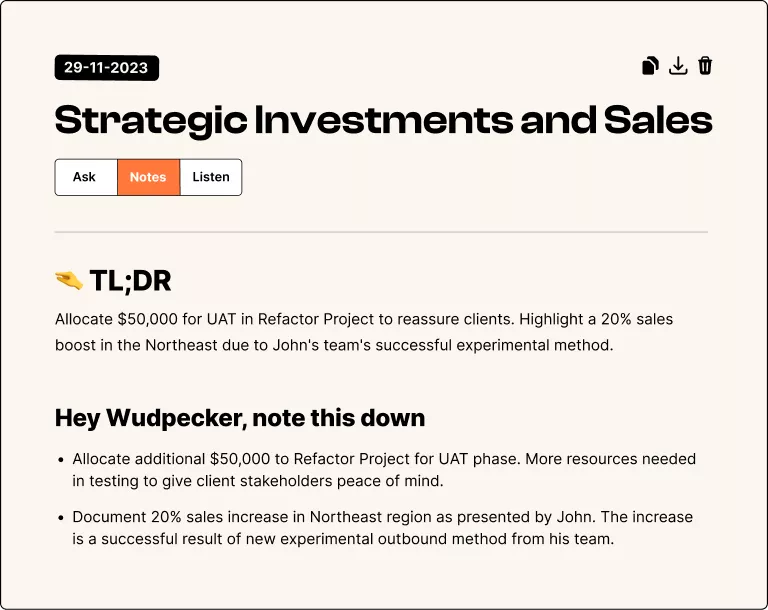Time-to-adoption is how quickly users start using your product effectively after first interacting with it. For B2B SaaS, this matters because faster adoption leads to:
- Lower churn rates: Users see value early and stick around.
- Higher customer value: Faster upgrades, more licenses, and premium feature use.
- Growth through advocacy: Happy users recommend your product, reducing acquisition costs.
To improve adoption, focus on these strategies:
- Better onboarding: Use guided tours, celebrate milestones, and tailor steps to roles.
- Intuitive design: Ensure easy navigation, clear visuals, and error prevention.
- Seamless integration: Fit into existing workflows with flexible processes and smooth data migration.
- In-product help: Add smart tooltips, tutorials, and feature announcements.
Track progress with metrics like feature adoption rates and time to first value. Use analytics tools (e.g., Userlens) to identify bottlenecks and improve user experiences.
Actionable Steps:
- Set key adoption metrics and benchmarks.
- Optimize onboarding workflows for simplicity.
- Monitor progress weekly and gather feedback.
- Leverage analytics to refine your approach.
Fast adoption ensures users see value quickly, driving retention, growth, and advocacy.
Five Stage Framework To Accelerate Product Adoption
Business Benefits of Fast Adoption
Speeding up adoption doesn't just improve retention - it also opens the door to broader business gains.
Lower Churn Rates
When your SaaS becomes part of a customer's daily workflow quickly, users see its value earlier, which helps with long-term retention. Tools like Userlens can help track early adoption trends, making it easier to spot and address potential problems before they lead to churn. Faster adoption doesn’t just keep customers around - it also enhances their overall experience with your product.
Higher Customer Value
Quick adoption doesn’t stop at retention; it also increases the overall value customers bring to your business. Here’s how:
- They move to higher-tier plans sooner.
- They purchase additional seats or licenses.
- They start using premium features more actively.
- They become advocates for your product within their organizations.
When users grasp the full capabilities of your software early, they’re more likely to deepen their commitment and investment over time.
Growth Through Advocacy
Helping users quickly realize value has another benefit: it turns them into advocates. This advocacy leads to:
- Lower costs to acquire new customers.
- Faster sales cycles for referrals.
- Better conversion rates from trial users.
- A steady flow of qualified leads through recommendations.
Fast adoption creates a positive cycle where satisfied users drive growth through word-of-mouth and referrals, making it easier to scale sustainably.
Factors Affecting Adoption Speed
To help B2B SaaS companies refine their product experience, it's important to understand what influences how quickly users adopt and effectively use new software. Faster adoption often leads to stronger retention and growth.
Onboarding Design
A well-thought-out onboarding process introduces users to core features and encourages engagement. Key elements include:
- Clear progress indicators that show users how far along they are in the setup process.
- Contextual guidance that provides help exactly when and where users need it.
- Early wins that demonstrate value quickly, motivating users to keep going.
Tailoring the onboarding experience to specific user roles can make a big difference. Tools like Userlens can help identify which paths lead to faster adoption.
Product Ease of Use
An intuitive product design plays a major role in speeding up adoption. Users should be able to navigate essential features without needing extensive training. Here are some important aspects:
- Consistent interface: Keep patterns uniform across the product to avoid confusion.
- Clear visual hierarchy: Highlight key actions and information so they naturally stand out.
- Error prevention: Design features that guide users away from mistakes before they occur.
When a product is easy to use, it blends seamlessly into users' daily routines.
Integration with User Methods
Ease of use alone isn't enough - your product also needs to fit into existing workflows. Here’s how:
- Flexible workflows: Allow users to customize processes and integrate with tools they already rely on.
- Streamlined data migration: Simplify importing data by offering clear paths, familiar structures, and automation.
The better your product aligns with users' current methods and addresses their pain points, the quicker they'll make it part of their routine. This requires a deep understanding of how they work and where they face challenges.
sbb-itb-6285ddb
Methods to Speed Up Adoption
Practical strategies can help users quickly embrace new tools by making the experience straightforward and engaging.
Improved Onboarding Steps
A well-designed onboarding process helps users become proficient faster:
- Guided tours: Let users actively explore key features instead of just watching demos.
- Celebrate progress: Highlight milestones to keep users motivated and engaged.
- Role-specific tasks: Tailor setup activities to align with each user's main goals.
Tools like Userlens can analyze user behavior with engagement heatmaps to identify what works best during onboarding. Adding reliable in-product help ensures users get immediate assistance as they learn.
In-Product Help Features
Built-in help tools make it easier for users to understand and adopt features:
- Smart tooltips: Offer brief, contextual explanations when users hover over complex elements.
- Feature announcements: Introduce new features with clear examples and quick-start guides.
- Embedded tutorials: Place help content right where users need it within the interface.
Providing assistance directly in the workflow allows users to explore and learn at their own pace without unnecessary interruptions.
Personalized User Paths
To complement onboarding and in-product help, customized user experiences address different needs:
- Role-based dashboards: Set up default views that showcase the most relevant features for each user type.
- Adaptive workflows: Modify the interface based on user behavior and preferences.
- Gradual feature rollout: Introduce advanced functions step by step as users become comfortable with the basics.
Using tools like Userlens's activity tracking can reveal which features are most popular among different user roles. This focused approach encourages quicker adoption and strengthens the link between fast implementation and long-term success.
Tracking Adoption Progress
Understanding adoption rates is crucial for B2B SaaS companies to refine their onboarding process and improve user engagement.
Key Metrics to Monitor
To gauge how users are embracing your platform, focus on these metrics:
- Feature Adoption Rate: The percentage of users actively using important features.
- Time to First Value: The time it takes for users to experience their first meaningful interaction with the product.
- Active User Growth: The week-over-week increase in the number of engaged users.
- Feature Usage Frequency: How often critical features are accessed by users.
- Adoption Completion Rate: The percentage of users who complete all onboarding steps.
Tracking these metrics across various user groups and roles can reveal trends that highlight both successes and challenges in adoption. These insights are the starting point for exploring user behavior in greater depth with analytics tools.
Tools for Better Insights
Modern analytics platforms make it easier to understand user behavior. Tools like Userlens are tailored for B2B SaaS companies, offering features such as:
- Engagement heatmaps that display activity across different features.
- Prebuilt dashboards with standard metrics for quick analysis.
- Alerts to identify early signs of declining usage.
- User segmentation based on roles and behavior patterns.
These tools help pinpoint areas where users face difficulties, allowing teams to address bottlenecks and reduce churn risks by re-engaging users before they disengage completely.
Leveraging Customer Feedback
While metrics provide valuable data, customer feedback adds essential context. Pairing analytics with direct user input offers a well-rounded view of the adoption process. Consider these sources for qualitative insights:
- Support Tickets: Identify recurring issues that slow down user progress.
- User Interviews: Gather firsthand accounts of adoption challenges.
- Feature Requests: Understand what users need to adopt features more effectively.
- Usage Surveys: Collect structured feedback on the overall adoption experience.
Conclusion
Main Points
For B2B SaaS companies, getting users to adopt quickly is a key ingredient for success. Faster adoption means users see value sooner, which leads to higher satisfaction, better retention rates, and growth. Tracking the right metrics helps ensure smooth integration.
An effective adoption strategy includes:
- Using data to guide decisions
- Addressing usage challenges promptly
- Improving onboarding based on feedback
- Providing well-thought-out in-product guidance
With these principles in mind, here’s how you can speed up adoption.
Action Items
If you want to reduce time-to-adoption and achieve better results, focus on these steps:
-
Establish Baseline Metrics
- Identify key adoption metrics to track
- Define success benchmarks for different user groups
- Set up alerts to flag potential adoption issues
-
Optimize Onboarding Workflows
- Make the initial setup process as smooth as possible
- Break down complex features into simpler steps
- Add helpful tips or instructions where users might get stuck
-
Monitor Progress
- Check adoption metrics weekly
- Conduct quarterly audits to assess performance
- Hold monthly feedback sessions with users to identify areas for improvement
-
Use Analytics Tools
- Track how users interact with features
- Monitor their progress through the product
- Investigate where and why users drop off
- Explore advanced tools like Userlens to dive deeper into user behavior and fine-tune your onboarding process.
Related posts



.svg)



















.svg)
